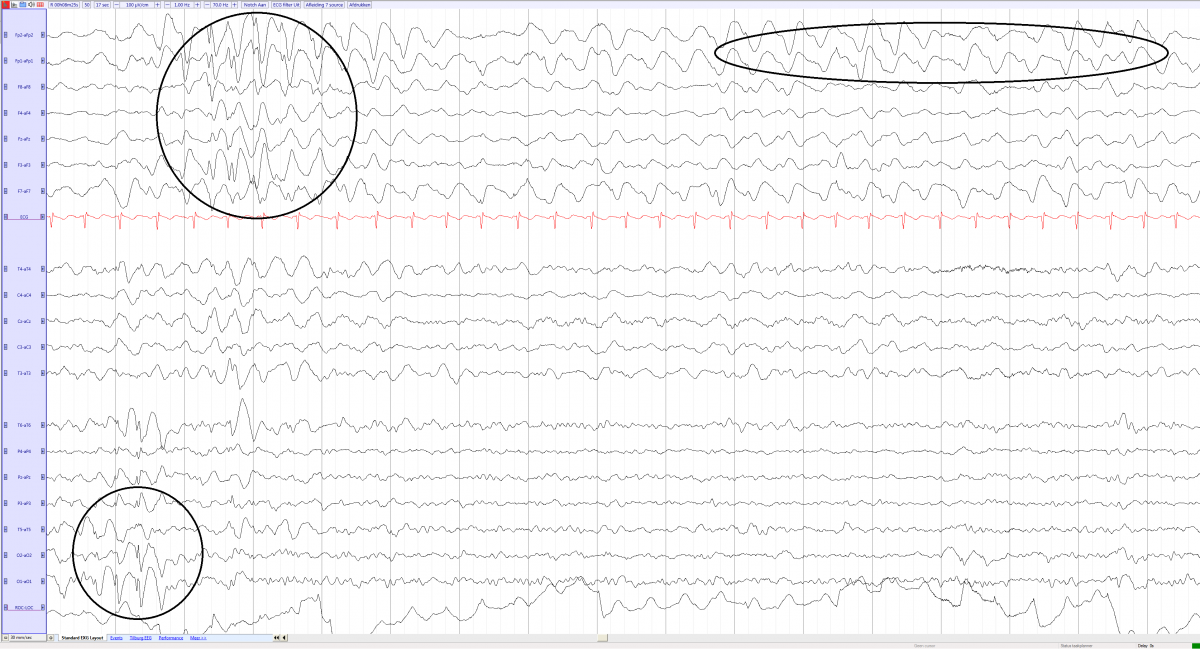Difference between revisions of "Angelman syndrome"
From EEGpedia
(Created page with "==Background== * In 1/12,000- 1/25,000 children. * Genetic disorder, loss of function in UBE3A gene on chromosome 15. * Clinical features apparent after birth, usually within...") |
|||
| (2 intermediate revisions by 2 users not shown) | |||
| Line 3: | Line 3: | ||
* Genetic disorder, loss of function in UBE3A gene on chromosome 15. | * Genetic disorder, loss of function in UBE3A gene on chromosome 15. | ||
* Clinical features apparent after birth, usually within age of 1 or 2 years old. | * Clinical features apparent after birth, usually within age of 1 or 2 years old. | ||
| − | |||
==Clinics== | ==Clinics== | ||
| Line 11: | Line 10: | ||
* Sleep disturbances. | * Sleep disturbances. | ||
* Microcephaly, large tongue and hypersalivation. | * Microcephaly, large tongue and hypersalivation. | ||
| − | * 90% of the | + | * 90% of the patients have seizures ; usually tonic or atone seizures, or absences. |
* Vulnerable to infections. | * Vulnerable to infections. | ||
| Line 19: | Line 18: | ||
* Occipital discharges can be triggered by closing th eyes. | * Occipital discharges can be triggered by closing th eyes. | ||
* EEG similar in patients wit hand without seizures. | * EEG similar in patients wit hand without seizures. | ||
| + | |||
| + | |||
| + | ---- | ||
| + | |||
| + | '''''Angelman syndrome in an 8-year-old girl (source) with frontal slowing together with occipital and frontal spikes and slow wave complexes, not synchrone''''' | ||
| + | [[File: Angelman_syndrome_in_an_8-year-old_girl_(source).png_EEGpedia.png|border|none|1200px|left]] | ||
| + | |||
| + | |||
| + | ---- | ||
Latest revision as of 11:28, 14 July 2017
Background
- In 1/12,000- 1/25,000 children.
- Genetic disorder, loss of function in UBE3A gene on chromosome 15.
- Clinical features apparent after birth, usually within age of 1 or 2 years old.
Clinics
- Delayed psychomotor development.
- In early years often smiling: ‘Happy puppet syndrome’.
- Overeating.
- Sleep disturbances.
- Microcephaly, large tongue and hypersalivation.
- 90% of the patients have seizures ; usually tonic or atone seizures, or absences.
- Vulnerable to infections.
EEG
- Frontal slowing
- Rhytmic discharges in 2-4Hz predominently in the frontal and/or occipital regions.
- Occipital discharges can be triggered by closing th eyes.
- EEG similar in patients wit hand without seizures.
Angelman syndrome in an 8-year-old girl (source) with frontal slowing together with occipital and frontal spikes and slow wave complexes, not synchrone
